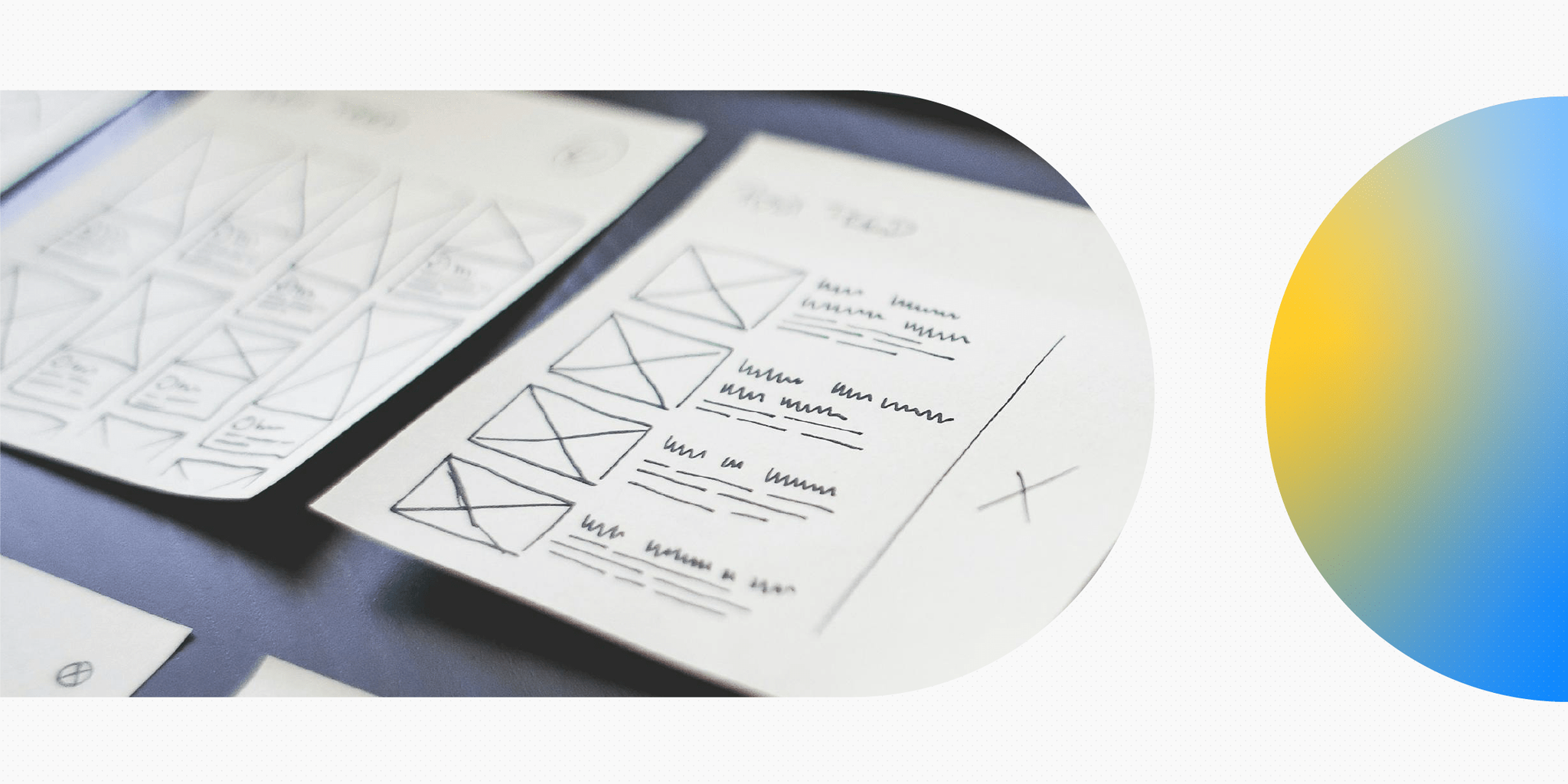The term ‘UX’ is everywhere. We hear people talking about good UX, bad UX, lean UX… and the list goes on. But what does UX stand for and what does it actually mean?
UX stands for user experience. It’s all about how a user feels when they interact with a product or service and it has a direct impact on a company’s relationship with their customers and target users.
That’s UX in a nutshell but there’s a lot more to it. Keep reading to learn:
- What does UX stand for and what does it mean?
- What is the difference between UX and UI?
- Why is UX important?
- What is UX design?
- What is the UX design process?
- What is a UX designer? (Plus other UX job titles)
- What defines good UX?
What does UX stand for and what does it mean?
“UX” stands for “user experience.” It describes the quality of the experience an end user has with a specific product, service, company or brand.
Although it’s often talked about in relation to digital products, like apps and websites, UX can relate to anything that an end user (i.e. a person) can interact with or encounter.
Take the example of going into your local bank to open a new account. If the process is quick and simple with clear instructions, easy-to-find information and friendly customer service, you’d come away feeling like you had a good user experience.
The same goes for ordering something online or using an app on your phone. If you’re able to accomplish your desired tasks with minimal effort, you’ll find the user experience to be a pleasant one.
UX doesn’t relate to one specific thing. It’s the sum of all the smaller parts that determines whether the overall encounter between the product/service and the user is a positive one. You can think of it as the impression the user leaves with and whether or not they’d be keen to repeat the experience.
Where does the term “UX” come from?
The term “UX” was invented by Donald Norman, a cognitive psychologist who started working at Apple in the early 1990s. He took on the role of User Experience Architect, making him the first (known) person in history to have UX in their job title.
Explaining the origins of UX, Donald Norman said:
“I invented the term because I thought human interface and usability were too narrow. I wanted to cover all aspects of the person’s experience with a system, including industrial design, graphics, the interface, the physical interaction and the manual.”
In this video, Donald Norman explains in more detail what he meant when he came up with the term — and how it tends to be misused today. Most importantly, he emphasises that UX doesn’t just encompass the design of a product or the product itself; it covers everything surrounding the product that impacts how the user experiences it.
What is the difference between UX and UI?
If you’ve heard of UX, you’ve probably also heard of UI. The terms are often used together but it’s important to be clear on the difference between them.
UX is a much broader term, covering everything that influences how a user feels when they use a product or service. It’s not a single, tangible thing, but rather, the overall quality of the experience as a whole.
UI stands for “user interface”, which is the point of interaction between an end user and a digital product. The user interface comprises the screens, buttons and other touchpoints you might use to navigate an app or a website.
The way the user interface (UI) is designed has an impact on the overall user experience, so UI is an important part of UX. You can learn more about the difference between the two, as well as how they go hand-in-hand, in this guide to UX vs. UI.
Why is UX important?
UX is important because it directly impacts the relationship between a company and its customers.
If you have a positive experience with a product or service, you’re more likely to use it again and become a loyal customer. You might even recommend it to friends and family. That’s great for the brand reputation, which ultimately determines whether or not the product or service is successful and profitable.
On the flip side, a negative user experience leaves a bad impression of the product, service or brand. If it’s less than satisfactory, you’ll be inclined to go elsewhere, like a competitor with better UX.
Wherever there are two similar products or services offering the same functionality, the one with the best UX will always win out. UX is therefore crucial for winning and keeping customers, developing a positive brand reputation and, ultimately, for driving profit and business growth.
We compiled some interesting statistics about the business value of UX, like the fact that 66% of customers are willing to pay more for a great user experience, in this post. We also covered in more detail about the human value of good UX and how it plays an important role in ensuring that products and services are not only enjoyable to use, but are as inclusive and accessible for as many people as possible.
What is UX design?
If UX describes the quality of a user’s encounter with a particular product or service, UX design is the process of creating and shaping these experiences, with the goal of making them positive, pleasant and valuable for the end user.
UX design isn’t about how a product looks; that’s just one aspect of the overall user experience. It’s more about ensuring that the product is logical, functional, easy to navigate and generally user-friendly.
There are 5 elements of UX design to consider:
- Strategy: Deciding which objectives the product should meet, including both end user goals and client/business stakeholder objectives.
- Scope: Fleshing out the details of the product, determining which features and functionality it should offer.
- Structure: Mapping out the structure of the product, considering how users will navigate from one point to the next and what information they’ll need to move around the product and accomplish their goals.
- Skeleton: Drilling down to the finer details of how each page should be structured and which elements (buttons, menus and other content) will go where.
- Surface: Considering the user’s sensory experience of the product, defining how the product will look in terms of colours, imagery, spacing, typography and so on. This is where UI design comes in.
What is the UX process?
The UX design process focuses on identifying and solving a problem for a specific target audience. It includes:
- Conducting user research to understand who you’re designing the experience for and what problems they need solving.
- Narrowing it down to one problem and coming up with potential solutions.
- Designing the chosen solution.
- Making prototypes to test and validate the design, i.e. to make sure it will actually solve the user’s problem.
- Developing the prototypes into a fully-fledged product or service which people can use.
- Continuously improving the product/service (and thus the user experience) based on continuous testing and feedback.
If you’d like to learn more about what UX design is, Colman Walsh, CEO of the UX Design Institute, provides a more detailed explanation in this video:
What is a UX designer?
The people who are responsible for following the UX process and creating good (or bad) UX are UX designers.
Although the term “UX” doesn’t relate exclusively to digital products, UX designers typically work in the tech industry, collaborating closely with software developers, product managers/product owners and other business stakeholders to ensure all aspects of the product’s UX are on point.
As part of their day-to-day work, UX designers:
- Conduct user research.
- Create user personas — fictional characters which represent the target user, allowing UX designers to summarise, and better understand, the end user’s needs.
- Define the information architecture of the product, i.e. how the content will be laid out and organised.
- Create wireframes and prototypes to map out the structure of the product and the journey the user will take to complete certain tasks.
- Run user and usability tests to identify where and how the product’s UX can be improved.
That’s not an exhaustive list and the work of a UX designer varies based on where they work and the industry they’re in. But, as you can see, UX design covers a variety of tasks and takes many different factors into consideration.
What other UX roles and job titles are there?
UX designer isn’t the only UX-related profession out there. In bigger organisations, it’s not uncommon to have dedicated experts focusing on just one or two aspects of the user experience.
Some of the most popular UX job titles include:
- UX researcher: Someone who specialises in user research, analysing research findings and understanding the target audience.
- UX architect/information architect: Someone who focuses on organising and structuring all the information and content that a user will encounter.
- UX strategist: Responsible for devising an overarching UX strategy, balancing end user needs against business goals.
- UX writer: Someone who specialises in writing microcopy — the content that’s placed throughout a digital product to help the user navigate and provide them with useful information at various touchpoints. You can learn more about UX writing here.
Just as UX itself is extremely broad and multidisciplinary, a career in the field also has plenty of potential for a varied, all-round UX role or a more specialist pathway focusing on just one aspect of the user experience.
What defines good UX?
Defining good UX can be tricky, as it’s not just down to one specific thing. There are lots of different components that shape the user experience.
One important measure of good UX is usability. Usability relates to how easy a given product is to use and it’s influenced by things like:
- Learnability – how easy it is for a user to learn how to use the product for the first time.
- Efficiency – how quickly and seamlessly the user is able to complete their goals and tasks.
- Memorability – how easy it is for the user to jump back into the product after not using it for a while.
- Errors – how many errors does a user typically make when using the product.
- Satisfaction – how pleasant or enjoyable is the product to use.
Another crucial aspect of good UX is user-centricity. The best products and services have been designed in a way that centres the user’s needs and helps to solve their problems. If you don’t design with user-centricity at the forefront, you’re unlikely to achieve good UX.
Those are just some of the underlying principles that contribute to good UX. You’ll find more fundamental UX principles in this guide.
Learn more about UX
Now you know what UX stands for, what it means, and why it’s important. Still, there’s so much more to discover about the broad and varied field of UX, so don’t stop here. Discover more UX terms in our complete UX glossary, explore the fun side of UX in this post or learn about the skills needed to become a UX designer.




